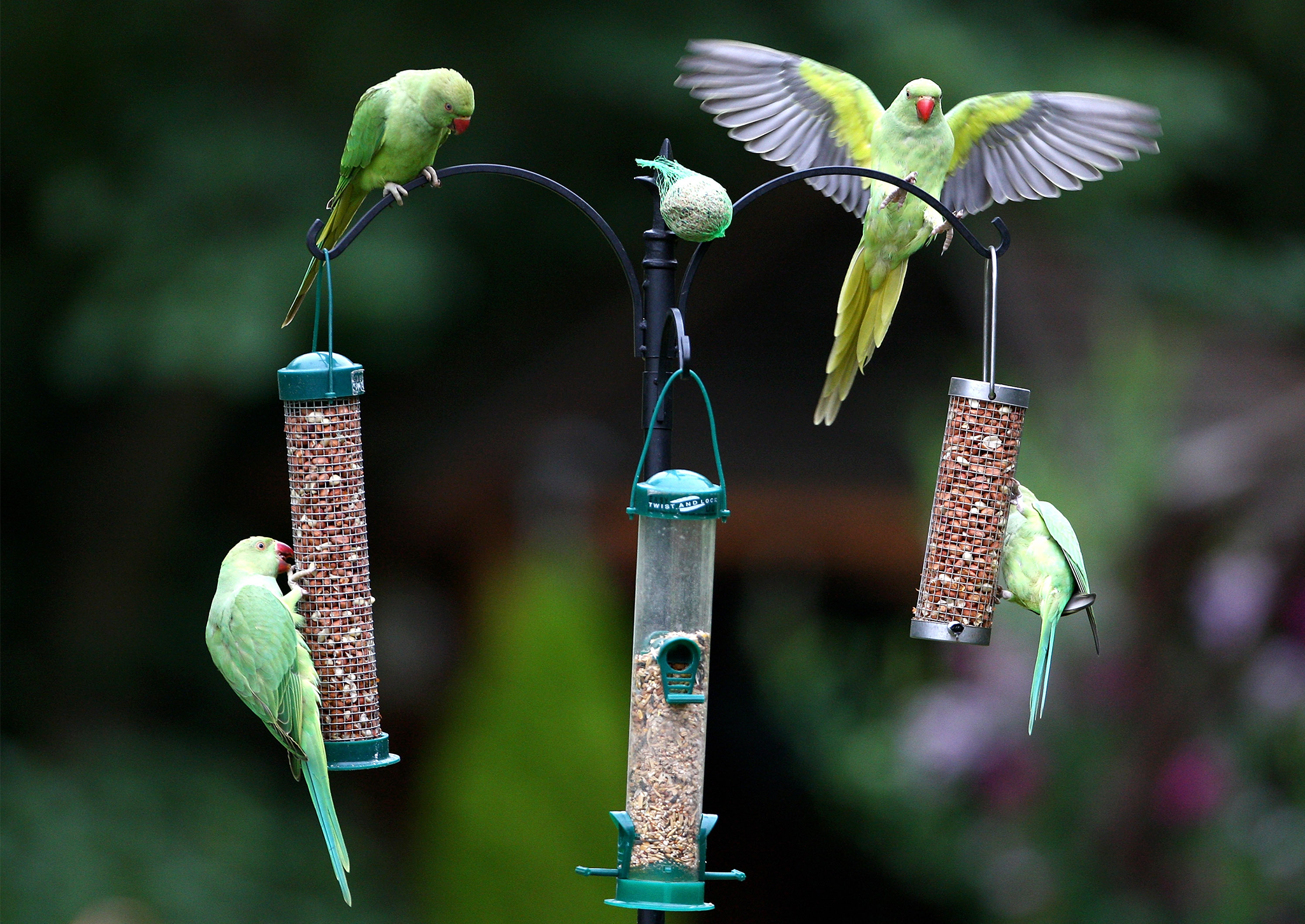Nature Studies: London’s beautiful parakeets have a new enemy to deal with
Peregrine falcons are the most regular parakeet predators, but the capital's hobbies have also been seen enjoying a parrot snack

Here’s a sentence it would have been impossible to write a few years ago: London’s parrots are being targeted by birds of prey.
It is only comparatively recently that the brilliant-green ring-necked parakeet has become a fixture of the avifauna of the capital, enlivening parks with its flashing flight and screeching flocks; and recently too, sparrowhawks, peregrine falcons and even hobbies – the most dashing of falcons – have set up home in the heart of London. Now these two groups are clashing head on.
The conspicuous parakeets are handy prey for London’s growing number of raptors, and even for the capital’s owls, according to a study in the latest issue of the journal British Birds, detailing regular observations by Ralph Hancock and Jeff Martin in London’s parks, especially Hyde Park and Kensington Gardens.
Peregrine falcons are the most regular parakeet predators, but the hobbies which have been nesting in Kensington Gardens for the past five years have also been seen enjoying a parrot snack. And analysis of owl pellets has shown that the capital’s tawny owls have worked out how to catch this interesting variation on their normal diet of mice and rats.
The authors write: “The owls appear to have adopted a simple but effective method of hunting parakeets. Perched in the top of a tall tree, waiting for potential prey to arrive in a neighbouring tree at a lower level, the owl simply glides silently down to grab the parakeet.”
You can sometimes actually see peregrine falcons with parakeet prey, live, if you look at some of the web cameras monitoring London peregrine nests, such as the one on the side of the Charing Cross Hospital in Fulham Palace Road (go to fabperegrines.org.uk – the fab stands for “Fulham and Battersea”).
The two birds, named Charlie and Tom by their monitor, Nathalie Mahieu, have nested successfully since 2011 and often bring parakeets back to their eyrie on a ledge.
“Yes, they catch them regularly,” Nathalie said. “I think they are easy to catch because they fly very high and scream loudly.”
No one knows exactly when the ring-necked parakeet, Psittacula krameri, a tropical bird whose normal home range stretches across Africa to Asia, began breeding in London and south-east England, but it was probably in the early 1960s or shortly before. One story, almost certainly apocryphal, is that birds escaped from the set of the movie The African Queen, starring Humphrey Bogart and Katherine Hepburn, which was partly filmed in Isleworth studios in west London in 1951.
Most ornithologists think the original birds probably escaped from aviaries. Breeding was first confirmed in 1971 in Surrey, and since then the population has boomed, with a recent estimate suggesting it may be as high as 30,000 birds, centred on Greater London.
The birds are balanced, as it were, on the cusp of acceptance in Britain – they are stunning in their iridescent emerald plumage with a rose-red neck ring, and a thrill the first time you see them, but they are also aggressive, destructive, and extremely raucous in large flocks. In Kew Gardens, where they are ubiquitous, they sometimes drown out all other birdsong.
In Africa and India the bird is a major pest of crops and orchards, although the main concern about its mushrooming numbers here is that it may displace other hole-nesting birds, such as woodpeckers and nuthatches. The environmentalist Tony Juniper, the former director of Friends of the Earth and one of the world’s leading authorities on parrots, once said it had the potential to be “the grey squirrel of the skies”.
The concerns were such that in 2009 the Government made our naturalised parrot officially a pest, placing it with gulls, crows and magpies on the shortlist of birds which can be legally shot without special permission. This mean that if a landowner or any other “authorised person” has good reason to believe the birds are causing a specific problem, he or she is free to shoot them without seeking an individual licence.
But it may be the predators, in the end, which keep them in check. Hancock and Martin write: “It will be interesting to see whether predation may temper fears that parakeets will have a significant displacement effect on other hole-nesting species.” One set of forceful newcomers may have met their match with an even more assertive bunch.
Join our commenting forum
Join thought-provoking conversations, follow other Independent readers and see their replies
0Comments